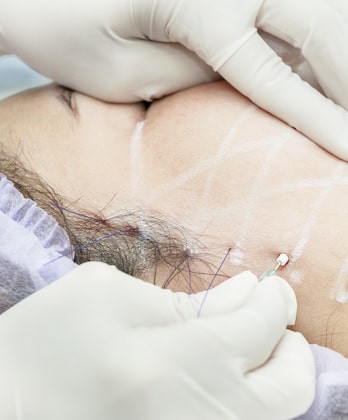
As you continue to age, the signs of aging start to become quite noticeable on the face. Some of the most common signs of aging include a loss of volume in the face, wrinkles, fine lines, and sagging skin. Thankfully, there have been advances in cosmetic procedures over the years that provide successful treatment options to rejuvenate the face. Two of the most popular options to treat signs of aging on the face include a facelift and a thread lift. Even though the word “lift” might make them seem to be similar procedures, they differ in terms of how they are performed and how long the results last. Let’s look at both treatments to highlight the differences between them.
A traditional facelift is a surgical procedure that is performed to rejuvenate the face. The purpose of the surgery is to tighten the skin as well as the underlying facial tissues. It is often performed on patients who are showing advanced signs of aging such as a good amount of skin laxity in the neck and facial folds, deep wrinkles in the face, and jowls. The patient also needs to have enough bone structure to give the skin the support it needs after the surgery.
During facelift surgery, the surgeon creates incisions behind the ears or around the hairline in order to easily access the underlying tissues of the face. Then, the surgeon will tighten the muscles and remove any excess skin before closing the incisions that were created at the start of the surgery.
The amount of necessary downtime following a facelift depends on the amount of changes made by the surgeon and the individual healing ability of the patient. There will be some tightness and/or discomfort following the procedure, so you need to plan for at least a week of downtime including getting plenty of rest and not performing strenuous activities. Any bruising and swelling will last for anywhere from seven to fourteen days.
The final results will start to be seen anywhere from three to six months after the surgery. The results of a traditional facelift can last anywhere from ten to twenty years.
 Patients who want to refresh the look of their face using a less invasive option can talk to their doctor about having a thread lift. The procedure, which is also known as a contour thread lift, is intended to elevate brows, jowls, and cheeks that are sagging.
Patients who want to refresh the look of their face using a less invasive option can talk to their doctor about having a thread lift. The procedure, which is also known as a contour thread lift, is intended to elevate brows, jowls, and cheeks that are sagging.
The treatment involves the insertion of thin threads into tiny incisions that the doctor creates in the treated area. The inserted threads are able to attach to the tissue of the skin and then they are pulled back so the face is lifted enough that it gains a smooth look. The lifting of the face eliminates the appearance of sagging skin. In addition, the threads will become knotted, so they are able to hide in the skin. If the procedure is considered to be a contour thread lift, the doctor uses unique contour threads to attain the desired results.
A thread lift is an ideal choice for patients who are experiencing sagging skin, but they still have a good skin tone. The sagging in their face or neck is not dramatic enough that they need to undergo an invasive facelift surgery. It is a good option if the patient needs to address issues of aging with the mid-face.
The recovery period is much shorter than a facelift and the patient can likely resume their normal activities after a few days. There is not much bruising or swelling after a thread lift. Unlike a facelift, the final results will only last between one and two years so a follow-up procedure will be needed to maintain the results.
Once you know the difference between the two treatment options, it will be time for you to decide. There are several factors to keep in mind when choosing between a facelift and a thread lift. Some of the factors to consider include the amount of improvement that you want to achieve, the severity and extent of the signs of aging, the desire to have a surgical or non-invasive procedure, and the amount of time you can afford to take off work to recover from the treatment.
A person with significant signs of aging will likely want results that provide a long-lasting change to the face. If this is the case, they are probably a better candidate for a facelift.
If you do not have a significant amount of aging signs on your face, a thread lift might be the best option since it also involves less downtime.
The final decision should also be made after a consultation appointment with an experienced and board-certified cosmetic surgeon. The doctor can examine the current condition of the skin in order to determine the amount of work that will need to be performed to achieve the desired results. The surgeon will also perform a thorough health examination to make sure you are healthy enough for either treatment option.
- MA